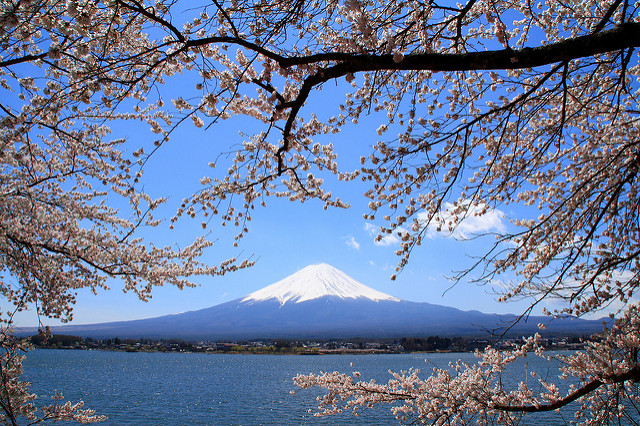The capital of consumerism, Tokyo is a city where opulence knows no limits. As one of the largest metropolises in the word, its maze-like streets and cacophony of neon lights lead you to the area’s extravagances. But, if you take a moment to step away from the noise, soaring buildings, and crowded streets, you’ll find pockets of calm that portray the steadfast adherence to tradition in which residents apply long-standing customs to centuries-old trades. The resulting scene is a dynamic marriage of skilled artisans and the greatest minds that inspire the world at large. When you fly to Tokyo in a private jet from London, you might not be able to catch all of the city’s attractions in one trip. However, you can make the most of some of area’s greatest sites.
Mt. Fuji
An old Japanese proverb states, “一度も登らない馬鹿、2度登る馬鹿” (You are a fool if you never climb (Mt. Fuji), you are twice the fool if you climb it more than once).
As the most prominent aspect of Tokyo’s skyline, Mt. Fuji (or as the residents call it, Fuji-san) is Japan’s highest mountain at 12,385 feet. You’ll find the active stratovolcano about 60 miles southwest of Tokyo, on Honshu Island. The simplest way to travel across Tokyo’s Bayside, past the ancient Odawara castle and over Hakone’s verdant national park to the nearly perfect canonical peak is with a 70-minute helicopter ride.
Consider heading out to the summit in the wee hours of the morning, just before daybreak, to catch the goraiko (the coming of light), which refers to sunrise at Mt. Fuji and the feelings that the sight invokes. Afterward, hike along the volcano’s ridge (a ritual called Ohachimeguri), and pay your respects at a nearby shrine. If you don’t want to take a helicopter down the mountain, hike along the manicured paths. Or, paraglide from the Gotemba fifth station, between Subashiri and Hōei-zan peak on the mountain’s south side. If you are new to paragliding, several schools practice the sport in that area.
Kyoto
Once the capital of Japan for over a millennia, Kyoto on the island of Honshu is where you go to get a taste of old-world Japan. As the former center of philosophy, art, religion, cuisine and culture, the “thousand-year capital” was the birthplace of Zen, tea ceremonies and Kabuki theater. Visitors flock here for its spectacular sights, such as the grand temples and shrines. The Museum of Traditional Crafts is also popular because of its display of the 1,000 golden statues of Kannon, as well as those that highlight the city’s artisanal legacy. Because of time-honored tradition of placing a high value on quality craftsmanship, everything you encounter in Kyoto—from a small gift shop to a restaurant that serves 12-course meals—is likely to be the best of the best. Kyoto wants to be a gracious host and ensure that your visit is nothing less than wonderful.
Bullet Train
Riding a shinkansen, or bullet train, is an essential experience. The network of high-speed trains connects Tokyo with other major cities throughout the country. Operated by Japan Railways, the trains travel at speeds of up to 200 miles per hour. The railway has a proven track record and is known for its safety (no fatal accidents in its 50-year history), efficiency, punctuality, and comfort. Gran Class seats are the most comfortable and spacious, like those found on a private chartered jet. If a train does not offer Gran Class seats, reserve Green Car seats, which are akin to business class on a commercial flight. All the seats in shinkansen trains swivel 180 degrees, so you can face your travel companion.

